Eating At Lucien: Classic French-Style Bistro with Celebrity Hype
By Ian MacAllen on Friday, September 6th, 2024 at 3:00 am
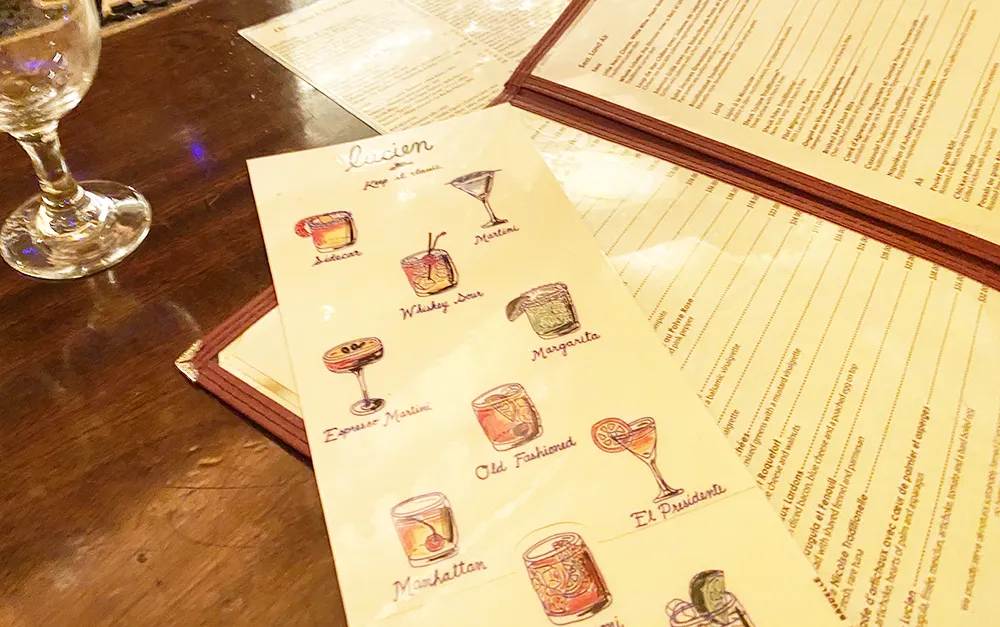
I was out in the East Village with my wife. We started the night at the launch party for a friend’s podcast, so you can imagine we had a few drinks when we were ready for dinner. It was early-ish on a Wednesday night in mid-August, meaning one of the easiest times to walk into a restaurant. Most of New York was out of town for summer.
So my wife suggested we try getting a table at Lucien. She had parsed the recommendation from the social media of publicist Kaitlin Phillips. Phillips is part of the downtown it-crowd, and of course the very first line in this New York Times profile begins, “At Lucien, the always crowded art-world-adjacent French restaurant”.
Lucien is exactly that, a French-style bistro that’s notoriously crowded especially with the downtown trustfund art crowd. The photos of famous diners pepper the wall, much like how Joe’s Pizza displays snapshots of it’s famous customers. But it was August, so they likely all in the Hamptons.
Lucien isn’t a hot new destination. It’s decidedly old school, part of a larger trend from several decades back when the East Village was filled with numerous French and French adjacent bistros. It opened in 1998, attracting all manner of interesting people from the creative fields. However, in 2019, founder Lucien Bahaj passed away.
Bahaj was born in Morocco, grew up in the south of France, and built a destination for celebrities and pop stars and artists. on his passing, many of these creative people eulogized him.
There are fewer French bistros in the east village, but not shortage of celebrities. They still come to the restaurant, as do artists and art dealers. Reservations are hard to make, but not necessarily hard to get. They can’t be made online and calling might not help, but stopping in during the afternoon is supposedly the way to do it. For us, we walked in drunk, a little bit sweaty from the August heat, and were seated straight away at the bar.
The bar seats were the right vibe for the time of night, and less crowded than the tables anyway. I wasn’t planning on having a cocktail since we had already been drinking for a while, but the cocktail menu was so retro and pretty. Besides, my wife ordered a Negroni and it didn’t seem fair to her if I skipped one more cocktail. I ordered an old fashioned. I wasn’t disappointed.
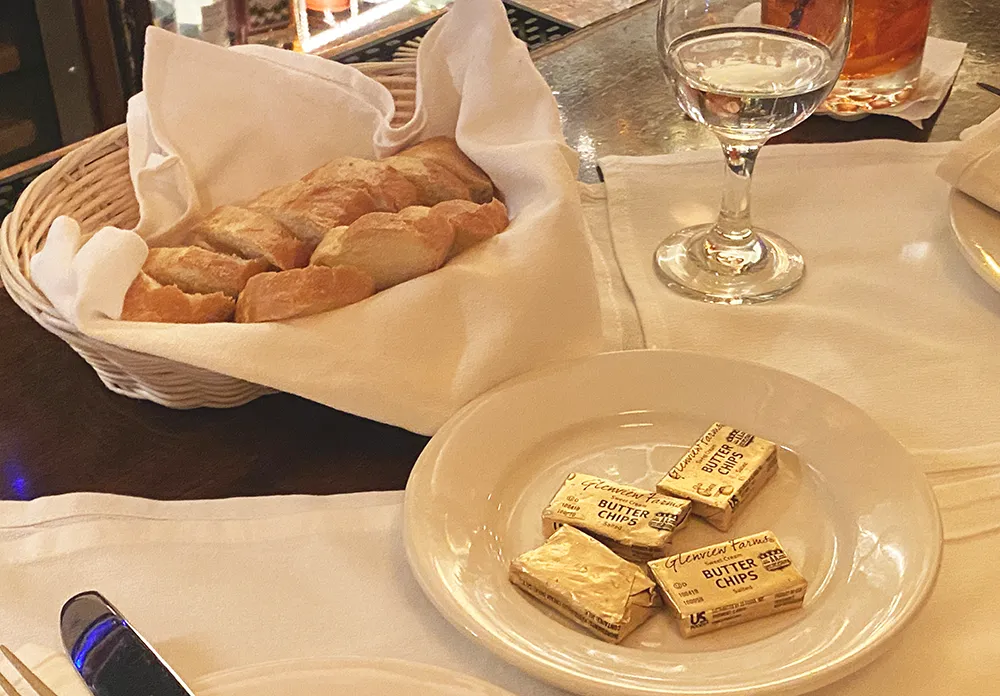
There was a certain French-inspired formality to the presentation that I appreciated. No tablecloth at the bar, but a white napkin served as a substitute. And there was bread service, a classic basket of slightly crusty bread and butter wrapped in gold. I soaked up some alcohol.
We sipped cocktails and reviewed the menu. It wasn’t long, but there were interesting French items. We debated the tartare. I considered escargot. I considered the rabbit over pasta, but it was August and too warm for something so rich. We debated starting with the tartare, then I suggested the steak frites.
With both of us deciding on the steak for dinner, we opted to skip the raw beef appetizer. That was fine by me, I had my eye on something else.
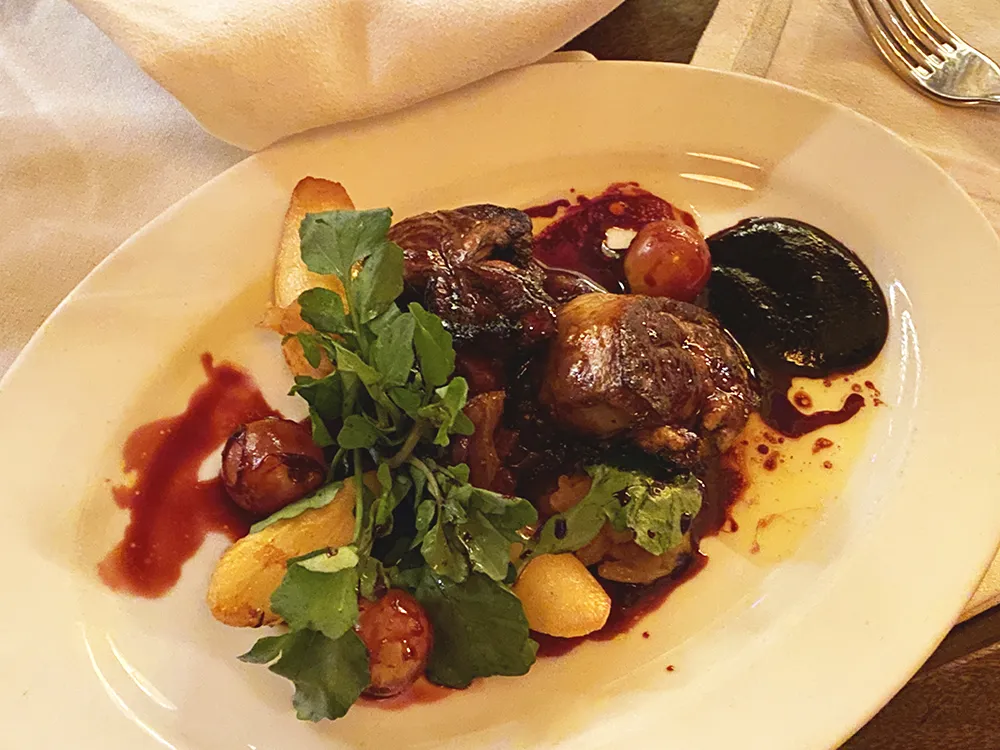
The foie gras jumped out on the menu. Just before the pandemic, the New York City council passed Local Law 202 banning the sale of foie gras within the city limits within three years. I vowed then to try as many of the foie gras dishes in the city before ban went into effect. There were roughly 1,000 restaurants serving it up at the time. I managed to eat at three of them before the pandemic shut things down.
The main problem with the foie gras ban is the vast majority of foie gras production in the United States happens in upstate New York. It’s a luxury product, and for a lot of those farms, a high profit margin item that kept them in the black. And as a result, foie gras farming also produced a lot of agricultural jobs for New York State.
Unsurprisingly, the farmers objected to the law since since their biggest customers were in New York City, and a huge share of the total market. New York State’s agricultural commissioner ruled the local law violated state law, by attempting to regulate a state agricultural product. As of July this year, the state’s Supreme Court backed the commissioner overruling the city.
But I’m still committed to eating all the city’s delights. Foie gras for all, I say.
The serving of foie gras was large and had a sweet compote — apple I believe. I could have used a little toast with it, but instead I had some bread from the basket. The freshness of the watercress helped to cut the fattiness of the liver.
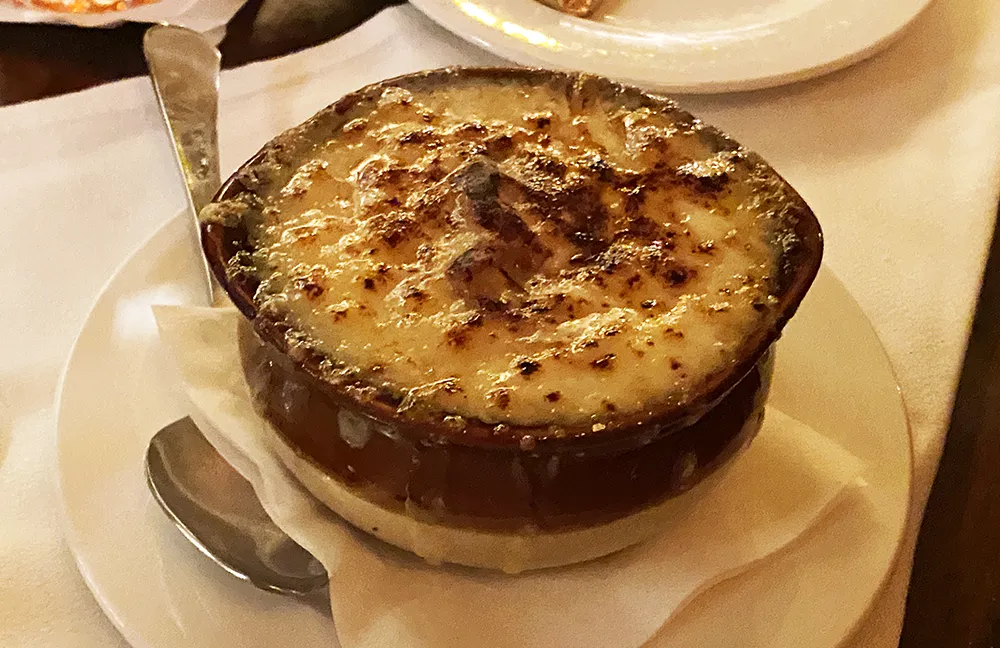
My wife, who’s love of fattened duck liver is not quite as deep as my own, ordered a French onion soup. It arrived with a nice layer of cheese but the broth itself was under seasoned and not quite as rich or umami as it should have been.
Before the steaks arrived, I had finished my cocktail and ordered a glass of wine. The full bodied red was perfectly adequate, but in retrospect the lighter red might have been a better choice. It was August after all.
While we waited, the restaurant began to fill. A few party girls dressed far fancier than we were huddled near us contemplating a bar seat. Luckily for them the hostess rescued them to an open table.
The steaks arrived with a delicious pile of fries, a garnish of watercress, and a ramekin of creamy pepper sauce. The pepper sauce was quite a good little flavor though I suspect it comes from a jar rather than made fresh in the restaurant. The frites were cooked quite perfectly.
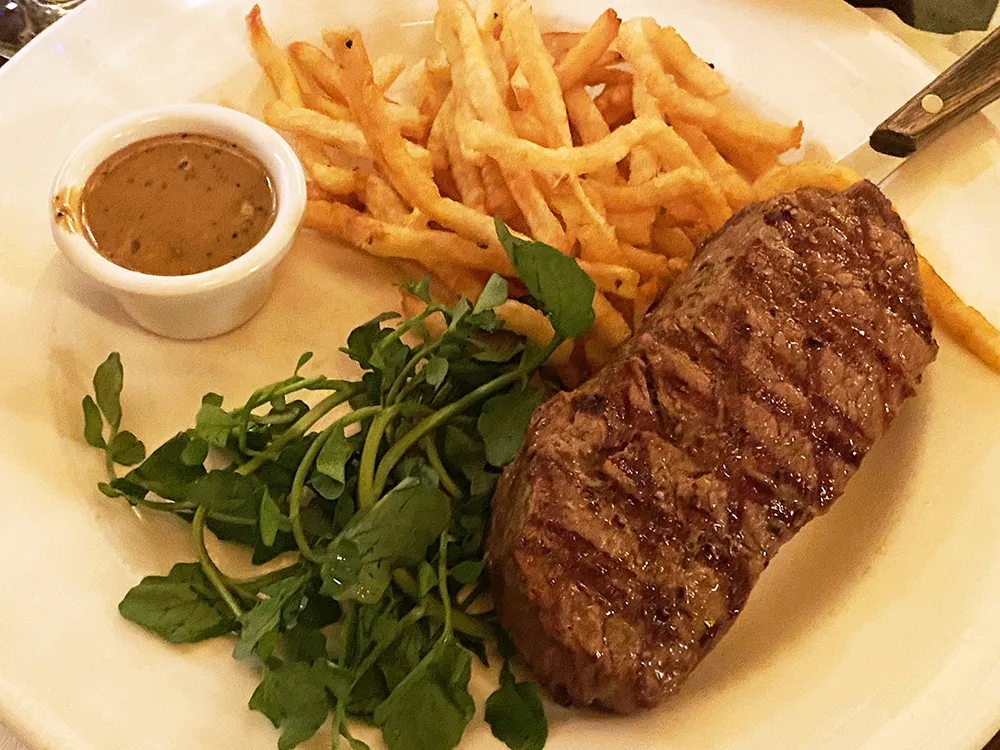 center>
center>
The steak was fine. It was tender enough and red enough in the middle. I might have liked a bit more jus to drip from it, forming what would be delicious puddle for my frites. But even without that, it was entirely satisfactory.
But that’s just the thing — it was satisfactory, and hit the correct notes, all while not being particularly memorable. It was fine.
But when the bill arrived, it was a stark reminder how inflation and catering to celebrities and trust fund artists means a perfectly ordinary meal can command an extraordinary price tag. In a sense, you’re paying for the view rather than the food.
It’s a common them in some New York City restaurants lately. If location or heritage or notoriety bring people in door, the food can suffer. It suddenly seems okay to serve customers something mid because they’re paying for something else. By contrast, the newer restaurants, especially outside of the traditional French or Italian cuisines work harder, find better ways to extract value and deliver more flavor for the dollar. They aren’t resting on repudiation.
Lucien was fun and I’m glad we went. However, I wouldn’t celebrate the food as much as the experience. It was a night out, an homage to French bistros, a place filled with pretty young people, and maybe that’s all it needs to be.

